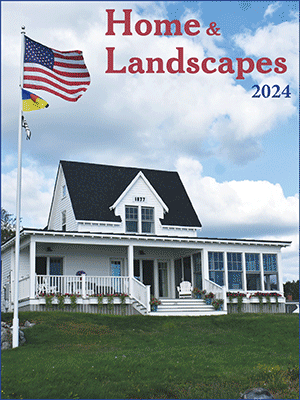It's not just about the dogs
Steve Seekins is a Therapy Dog International (TDI) evaluator. He and wife, Naomi Howe, conduct testing primarily in the St. George-Rockland area, where for several years they tested 100 dogs and their handlers annually. Seekins does plan to evaluate teams from Positively Best Friends' first TDI evaluation preparation class in late spring/early summer.
Seekins has been involved with therapy dogs for decades. He worked with “People Animals Love,” a group in the Washington D.C. metro area, founded in 1982 by a veterinarian.
Seekins' own dogs, then and now, continue to be certified therapy dogs. While with the D.C. group he was in charge of the certification of new volunteers and oversaw 230 teams that visited over 30 hospitals, hospice units, psychiatric facilities and other institutions.
Seekins has several books he recommends to dog owners interested in going into therapy work with their pets, including “The Other End of the Leash” by Patricia McConnell.
Seekins said preparation for the certification test and life as a therapy team should be fully explored. As part of this preparation, dogs should experience as much socialization as possible. He suggested to walk your dog where you will encounter another dog and owner and teach him obedience. By doing so, a pet owner and his or her dog have a standard base from which to work from, Seekins said.
It's not the breed that determines whether or not a dog is suited for therapy work, Seekins said. Shih Tzu or Scottish Deerhound, it's about the dog – and his owner.
As of January 2013, TDI revamped the evaluations for certification. Canine Good Citizen is no longer a basis for evaluation.
Seekins said the focus now is on the ability of both the handler and the dog to work in simulated environments. The key to success is how well the handler knows his or her dog.
“As much as I look at the dog, I look at the handler's knowledge of their dog,” Seekins said. “Do they understand their dog's body language; can they read their dog …. The handler's job in therapy work is to protect and care for their dog while the dog interacts with the patient.”
When preparing to leave for the test, Seekins advised handlers to leave the treats at home. As an evaluator Seekins does not permit them. Seekins advises handlers to work away from treats and toward toys instead (and not just not tennis balls). Why? Because many patients with walkers have tennis balls on the bottoms of the legs.
During the test, basic obedience is a must. Seekins said the commands “leave it” and recall (calling the dog to come to you) must be “rock solid.”
“When a handler calls, they must come no matter what,” Seekins said.
Testing will involve everything from waiting in a line to check in at a facility to the dog's ability to heel on a loose leash to their reactions to abrupt noises and children (usually 5-15 years old).
A Therapy Dog must pass all 13 of the test situations.
Once they pass the testing, they submit an application and test results to Therapy Dog International. The organization will send them a TDI dog tag and neckerchief, and TDI membership cards. Therapy dog standing must be renewed annually.
After certification, handler's must get organized; they must do things like introduce themselves to the right personnel at hospitals and nursing home, Seekins said.
There are dos and don'ts when visiting people, Seekins said. You must ask permission to enter a patient's room, check in at the nurse's station to see if there are patients who would not be receptive to a visit and find out if there are patients who are allergic to dogs; also, what you should and should not say while you are visiting and when you are leaving.
But above all, Seekins said therapy dog handlers must protect and care for his or her dog by observing them, noting when they are getting stressed, and ending the visit if necessary. “In my experience, the best teams work for 45 minutes because the dogs are so empathic they take on what the person they are visiting is experiencing,” Seekins said. “Some dogs will just need a break, and others will be done for the day. I can't stress enough how important it is for handlers to know and understand their dogs.”
Seekins said handlers should also be prepared for how they will be affected by visits. While he was with People Animals Love, Seekins visited hospices, soldiers back from Iraq who had lost limbs at the Walter Reed Army Medical Center, psychiatric units, and other facilities where people were facing tragic realities. He saw many volunteers leave an intensive care unit or an amputee's room in tears.
“They were so touched by what they had just seen happen between the patient and their dog,” Seekins said.
Event Date
Address
United States






















